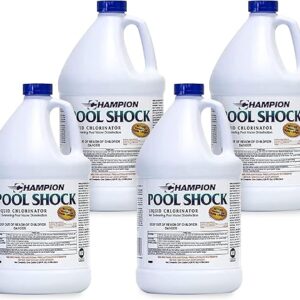How to Detect, Repair, and Prevent Suction Side Pool Leaks

Introduction
A swimming pool is a delightful addition to any home, providing hours of enjoyment and relaxation. However, like any complex system, pools are not immune to issues, and one of the most common problems pool owners face is leaks.
This blog post delves into suction-side pool leaks, their causes, detection methods, repair solutions, and preventive measures to ensure your pool stays watertight and trouble-free.
Most Loved Cordless Pool Cleaner: Aiper Scuba S1 Cordless Robotic Pool Vacuum Cleaner: Cleaning Schedule, Smart Navigation, Wall, Floor, & Waterline Cleaning, Suitable for all Pools Up to 1,600 sq.ft
What is a Suction Side Pool Leak?
A suction-side pool leak occurs when there is a breach in the system that pulls water into the pool’s filtration system. It typically happens on the suction side of the pool plumbing before the water reaches the pool pump.
These leaks can be challenging to identify but must be promptly addressed to prevent further damage and water loss.
View All the Recommended Swimming Pool Chemicals
Causes of Suction Side Pool Leaks
- Aging Pipes and Fittings: Over time, pipes and fittings can deteriorate due to exposure to chemicals, weather conditions, and wear and tear, leading to cracks or holes.
- Improper Installation: Inadequate installation of pipes, valves, or fittings can result in leaks. Ensure professionals install your pool system to avoid this issue.
- Freeze-Thaw Cycles: If you live in an area with cold winters, freeze-thaw cycles can cause pipes to expand and contract, potentially creating small cracks that lead to leaks when the pool is operational again.
- Pressure Changes: Rapid changes in water pressure, such as turning the pump on and off frequently, can stress the plumbing, leading to leaks.
- Chemical Imbalance: Incorrect pool chemical levels can corrode pipes and fittings, making them more susceptible to leaks.
Related Article: The Ultimate Guide To Swimming Pool Maintenance
Detecting Suction Side Pool Leaks
Detecting a suction-side pool leak can be a bit challenging, but there are several methods you can use:
- Water Loss Measurement: Measure your pool’s water level over a few days to see if it consistently drops more than what’s typical for evaporation.
- Dye Test: Add a few drops of food coloring near suspected leak points, like skimmer boxes, pool returns, or suction lines. If the dye is drawn into the leak, it can help pinpoint the problem area.
- Air Bubbles in Pump Basket: If you notice excessive air bubbles in your pump basket, it’s a sign that air is being sucked in through a leak in the suction side plumbing.
- Pressure Test: A professional can perform a pressure test to pressurize the plumbing system and detect leaks. This is one of the most accurate methods.
Related Product: Chlorworks Saltwater Pool System Chlorine Generator for Pools Up to 40,000 Gallons
Repairing a Suction Side Pool Leak
Once you’ve identified the source of the suction side pool leak, it’s time to address it. Here are some repair options:
- Patch or Sealant: Small cracks or holes can often be repaired using pool-grade epoxy putty or a suitable sealant. Follow manufacturer instructions carefully.
- Replacement: If the damage is extensive or a fitting or section of piping is severely compromised, it may need to be replaced.
- Professional Help: For complex or hard-to-reach leaks, or if you need clarification on the repair process, it’s best to consult a pool professional who can diagnose and fix the issue correctly.
Related Products: 16000 BTU Heat Pump for Upto 5000 Gallons Above-ground Pools & Spas, Heater and Cooler with WiFi Timer, 120V
Raypak 399,000 BTU Natural Gas Pool Heater – Electric Ignition
Preventing Suction Side Pool Leaks
Prevention is always better than cure. Here’s how you can prevent suction-side pool leaks:
- Regular Inspection: Routinely inspect your pool’s plumbing system for signs of wear and tear, cracks, or loose fittings.
- Proper Maintenance: Maintain the correct water chemistry to prevent corrosion and regularly clean and service your pool equipment.
- Winterization: If you live in a cold climate, properly winterize your pool to avoid damage from freeze-thaw cycles.
- Professional Installation: Ensure your pool system is installed and maintained by professionals to minimize the risk of leaks.
- Water Level Maintenance: Keep your pool’s water level within the recommended range to prevent straining the plumbing.
Related Product: Beatbot AquaSense Cordless Robotic Pool Vacuum Cleaner for Above Ground and Inground Pools Up to 2260 sq. ft
Conclusion
Suction-side pool leaks can be frustrating, but with the proper knowledge and preventive measures, you can minimize the risk and promptly address any issues. Regular inspection, proper maintenance, and professional help when needed are vital to keeping your pool in pristine condition so you can enjoy it for years to come.







